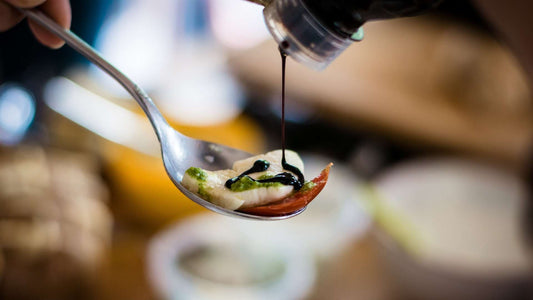Seasoning and pairings of Parmigiano Reggiano
introduction to Parmigiano Reggiano
Parmigiano Reggiano is one of the oldest and most representative cheeses of the Italian tradition. Its origins date back to the Middle Ages, thanks to the ingenuity of the Benedictine and Cistercian monks in the Parma and Reggio Emilia area. These monks, faced with excessive milk production, developed a cheese that could be preserved over time, giving life to Parmigiano Reggiano.
Already in 1200, Parmigiano Reggiano was known far beyond its area of origin, as evidenced by a notarial deed from 1254. The Renaissance brought further prosperity and expansion of production, making Parmesan an export product of great social and economic importance . Authors such as Giovanni Boccaccio contributed to his fame, citing him in the Decameron.
Today, Parmigiano Reggiano maintains its natural and artisanal production. Despite some technical innovations, it remains faithful to its original recipe, without additives. It is one of the most imitated cheeses in the world, a symbol of authenticity and quality, and continues to be an essential element of Italian and international cuisine.
maturation and characteristics of the cheese
Parmigiano Reggiano is known for its different maturations, each of which gives the cheese a unique flavor profile and a particular texture. The main seasonings include:
- Matured for 18 months
- Matured for 24 months
- Maturing for 30 months
- Matured for 40 months and more
The differences between these maturations are evident in both taste and consistency. For example, younger Parmigiano Reggiano has a sweet flavor and soft texture, ideal for grating over pasta and salads. As maturation increases, the cheese develops greater graininess and a more complex and intense flavor.
The maturation of over 40 months gives Parmigiano Reggiano a unique friability and solubility that make it perfect to be enjoyed alone or accompanied by fine wines.
These maturation variations make Parmigiano Reggiano an extremely versatile cheese, suitable for a wide range of culinary preparations and gastronomic combinations.
gastronomic combinations for every seasoning
Parmigiano Reggiano lends itself to a wide range of gastronomic combinations, each of which enhances its unique characteristics depending on the seasoning:
- 18 month maturation: Ideal for grating on fresh pasta and risottos. It pairs well with light and fruity white wines and eaten as a meal.
- 24 month maturation: Perfect for appetizers and cold cuts. Excellent with young and dry red wines.
- 30 month maturation: Tasty to enjoy alone or with honey and dried fruit. It goes well with structured red wines.
- Matured for 40 months and more: A delicacy to be savored on its own. Accompany it with complex and aged red wines.
In addition to these classic combinations, Parmigiano Reggiano can be used in many other culinary preparations. Add it to soups, sauces, or grate it over salads and grilled vegetables for a unique flavor boost.
The versatility of Parmigiano Reggiano makes it a beloved ingredient around the world and a delicious addition to any dish.
Lactose content in the different maturations of Parmigiano Reggiano
Parmigiano Reggiano is known to be a cheese also suitable for those suffering from lactose intolerance, thanks to its unique production process and the maturing process which transforms lactose into lactic acid.
During the first stages of processing, the lactobacilli present in the cheese ferment the lactose, transforming it into lactic acid. This process significantly reduces the lactose content in the cheese, making it safe for consumption even by people who are lactose intolerant. Additionally, galactose, another component of milk sugar, is rapidly metabolized within 24 to 48 hours.
An important characteristic of Parmigiano Reggiano is that, despite being produced from milk, in the forms aged from 1 to 36 months the lactose content is so low as to be considered negligible. This makes it a safe option for those who have eliminated dairy products from their diet but want to supplement calcium. In fact, a 50 gram portion of this cheese can provide approximately 580-650 milligrams of calcium, essential for bone and tooth health.
Impact of Parmigiano Reggiano on cholesterol
Parmigiano Reggiano, if consumed in moderation, can be considered safe for those with high cholesterol. This cheese contains approximately 80-90 milligrams of cholesterol per 100 grams, a relatively low amount compared to other foods.
Parmigiano Reggiano is rich in beneficial nutrients such as calcium, phosphorus, proteins, vitamins and amino acids. It is important to underline that, despite its cholesterol and saturated fat content, moderate consumption of this cheese does not increase blood cholesterol levels, thanks to the presence of unsaturated fatty acids and beneficial lipids.
For people with cholesterol problems, it is always advisable to consult a doctor or nutritionist before making significant changes to your diet. In general, a balanced diet and a healthy lifestyle are essential for keeping cholesterol levels under control and reducing the risk of cardiovascular disease.







